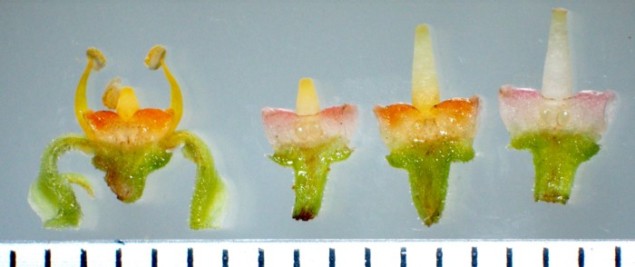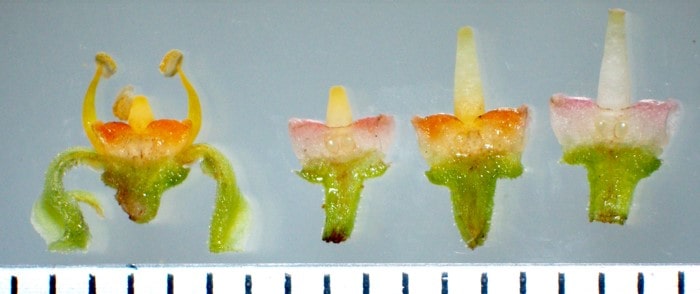
An extremely rare case of a flower that oscillates in colour over time has been discovered by researchers in Japan. The team, led by Nobomitsu Kawakubo at Gifu University, showed that the transformations are tied to cyclic changes in the flowers’ reproductive organs, which act to guide pollinating insects towards them.
Over 450 plant species are known to change the colours of their flowers. Botanists generally believe that these changes are related to the pollination conditions in each flower, signalling to insects where the best nectar can be found.
The vast majority of these colour changes are unidirectional, meaning once colour has changed, it can never change back. Yet in their study, Kawakubo’s team discovered an example of a far rarer bidirectional flower, which oscillates back and forth between two colours. Named Causonis japonica, this vine plant is native to tropical regions of Asia and Australia and is often considered to be a weed.
Fading to pink
At the start of its oscillation cycle, the researchers found that C. japonica’s flower disk is orange in colour, but soon fades to pink. After several hours of daylight, the flowers recover their orange hue, and the cycle repeats.
Through their analysis, the researchers discovered that these changes are strongly tied to levels of carotenoid pigments present in the flowers. Carotenoids are best known for giving carrots their distinctive orange hue, but are also responsible for producing red, orange, and yellow colours in organisms as diverse as pumpkins, lobsters, and bacteria surrounding volcanic hot springs.

A flower’s nano-powers
In C. japonica, the researchers found that levels of carotenoids peaked at times when its flowers featured pollen-producing male reproductive organs. This roughly coincided with an uptick in nectar secretion in the flower, providing optimal conditions for insect pollination.
As the male organs withered and detached from the flower, its accumulated carotenoid molecules degraded, and the flower turned pink. Yet after a few hours of daylight, the flowers then developed pollen-fertilizing female reproductive organs. As carotenoids accumulated once again, the flowers turned from pink to orange, and began to secrete more nectar. Eventually, these organs wither away, the flowers turn pink, and the cycle begins again.
Having uncovered this oscillating phase changes, Kawakubo and colleagues will now aim to learn more about the biological mechanisms involved. Where C. japonica was once widely seen as a nuisance in Japan, the team hopes that their discoveries of its remarkable behaviour could spark a new appreciation of the plant. A better understanding of how colour changes take place in other flowers may also lead to better techniques for protecting threatened plant species.
The research is described in Scientific Reports.
